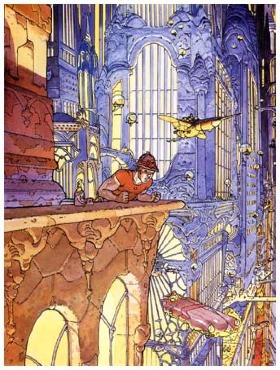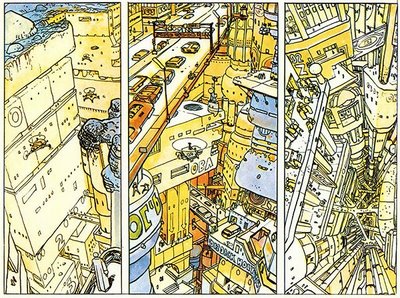Brilliant sci fi combined with exquisite application of old-fashioned film noir puts the seminal film Blade Runner at the top of my list of all-time greats. Like many sci-fi films and works of the 1980’s Blade Runner paints a bleak picture of the future.

The film depicts a dystopian Los Angeles in November 2019 in which genetically engineered organic robots called replicants—visually indistinguishable from adult humans—are manufactured by the powerful Tyrell Corporation as well as other mega manufacturers around the world. Their use on Earth is banned, and replicants are exclusively used for dangerous, menial or leisure work on Earth’s off-world colonies. Replicants who defy the ban and return to Earth are hunted down and “retired” by police special operatives known as “Blade Runners”. The plot focuses on a brutal and cunning group of recently escaped replicants hiding in Los Angeles and the burnt out expert blade runner, Rick Deckard (Harrison Ford), who reluctantly agrees to take on one more assignment to hunt them down. [This paragraph lifted from Wikipedia]
| SUPPORT INDEPENDENT SOCIAL COMMENTARY! Subscribe to our Substack community GRP Insider to receive by email our in-depth free weekly newsletter. Subscribe to our Substack newsletter, GRP Insider! Learn more |
Most of us who saw its original release remember the voice of Deckard’s wry narration overlaying most of the film as the story unfolded. However, the Director’s Cut released in 1992 does away with Deckard’s voice-over narrative which was added to the original 1982 theatrical release after test audience feedback indicating difficulty understanding the story. The resulting experience of viewing the Director’s cut is a more immersive experience in contrast to the more laid-back experience of being spoon-fed by the narration voice-over in the original release.

Blade Runner brilliantly captures the vertigo of the forest of high-rises that crowd the megalopolis of the Los Angeles of 2019. It is the cramped, claustrophobic, urban jungle setting that gives Blade Runner its character. The theme is reminiscent of and probably inspired by the derelict cityscapes in the art of Jean Giraud (a.k.a. “Moebius”) in the excellent graphic novels that featured his work in the 1970s. In these future cities, class is determined not only by conventional (horizontal) geography but also by the vertical, with the elites living at the highest building levels (above the perma-smog that envelopes the city) and the plebes living at the ground level where, as portrayed in Blade Runner, it is perennially overcast by the city haze and wet (both from constant rain and, it seems, whatever else drips down from those living above).

Perhaps the genius in Blade Runner is in the way it expressed within it multiple dimensions of social stratification — between the upper and lower city dwellers in a vertical metropolis and between the human and sub-human that comprised the more readily-evident conflict in the plot.
- This latest Filipino-style ‘anti-corruption’ circus proves that the Philippines needs a serious reboot - November 16, 2025
- Filipinos literal sitting ducks as wind and floods from natural tropical typhoons amplified by years of neglect bear down - November 9, 2025
- Rally NA NAMAN??? - September 20, 2025
One of the 5 films i’d take with me if im stuck in an island
Indeed. That and Saving Private Ryan. 🙂
i was meaning to dig up my dvd of that director’s cut.
Yeah me too. It’s somewhere in the pile…
Meanings within meanings, that verticle thing. I have a hard time with sci-fi of this order of magnitude, leaps of the brain into a future that are bound up in death and misery and that horrid dark mist, as if we become less enlightened in the future, rather than more.
That said, one of my favorite films of all time is “Appocalypse Now”, for the surrealism that was Viet Nam, on the ground, and for the meanings within meanings, echoes of Joseph Conrad’s “Heart of Darkness”.